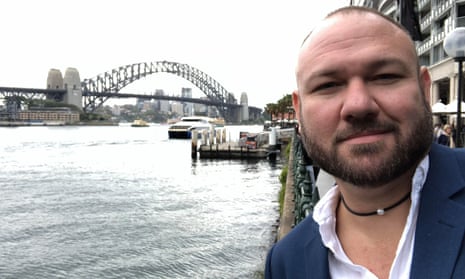For many years the Kimberley has endured the highest Indigenous suicide rates in Australia.
The Northern Territory now carries this distinction. It was in the second half of 2011 that I began working in the Kimberley and in suicide prevention.
Having grown up in Darwin I am used to the “bush” and those initial years working out across the Kimberley was what my work/life balance had been missing. I was employed in the Aboriginal community-controlled health sector, specifically in suicide prevention. Working in the Aboriginal community-controlled health sector and out bush is one the most empowering vocations of my career. It is also where I learned the most.
My suicide prevention role encompassed spending months on the road visiting five identified townships, and their surrounding communities. Each township was allocated two to three months to undertake as many conversations as needed to formulate localised Aboriginal suicide prevention community action plans.
From these conversations three key themes emerged, the need for housing, the need for jobs (not training but actual jobs, an important distinction), and the need for on country healing. This may sound controversial to some, but at no point was there a request for culture.
The reason being, that if culture is defined, as it often is in the health literature, as living on country, speaking language, engaging ceremonial practices and lore, it was happening here in great abundance.
I am back home now, living and working in the NT and the call for culture, as a solution to suicide, also isn’t coming from the communities I’ve been visiting. It’s jobs, housing, and healing.
Apart from the frontline work I do, between spending time with family and friends, I engage in a bit of the discussion about Indigenous suicide online, mostly via Twitter.
What I find problematic online is the “culture as suicide prevention” mantra that populates a significant volume of the conversation. The main problem being is that it is never clearly defined.
In order to prevent suicide, you can’t work within the confines of ambiguities. The English language has over 150 definitions of the word culture, so it is ok for us mob too. But what is meant by culture, specifically by those espousing it as the panacea to suicide, needs to be clear.
What I also find problematic is that when culture is defined as “living on country, speaking language, engaging in ceremonial practices and lore” it is often used as a coverall for preventing Indigenous suicide. For the regions where “culture” like this is in great abundance, so too are the escalating rates of suicide.
I don’t live on country, nor do I engage in ceremonial practices nor do I speak language, so as cultural markers affecting my health, there is little impact. This isn’t an attempt to devalue what these factors may mean for others, I just don’t believe it to be the panacea. Suicide is a behaviour and is both complex and multifactorial.
The most important “cultural marker” that value adds to my wellbeing is my identity. That is, I know who I am, and I who my family are. I know where my mob are from. I’ve been connected and have known my Indigeneity since birth. My identity is strong, and this is what works for me. But so too does accessing the appropriate support when in need.
As Indigenous people we are not a singular homogeneous group. Within our own population subgroups also exist. This includes men, women, young people, lesbian, gay, bisexual, queer and transgender people for example. Meaning we have many (cross) cultural and intersecting identities and experiences that exist and co-exist. Where we live also adds to our diversity.
Nationwide, Australia experienced a 9.1% increase in deaths by suicides in 2017. Indigenous suicides were up from 165 in 2016, to 167 in 2017. In 2015, the number was 152. As a percentage the 167 Indigenous deaths by suicide in 2017 accounts for .02% of the Indigenous population. Whilst that number may seem small, the impact is undeniably huge. Its compounds trauma and current approaches are not working. There is a significant gap in the evidence that what is being funded to deliver suicide prevention initiatives actually reduces rates of suicide.
By employing a critical look at suicide, we can do away with “universal” risk factors, whose purpose only seems to homogenise us. Indigenous suicide prevention needs less ambiguity, more clarity and we need a more definitive understanding of suicide for the behaviour that it is. Not a mental illness.
Not only is the mental health response to suicide failing Indigenous people, it is failing all Australians. We can measure that by its ineffectiveness in the recent 9.1% increase. Suicide is not a mental illness, it’s a behaviour.
It’s time for critical thinking. Families across Australia deserve it.
Dameyon Bonson is a remote area facilitator and trainer working in suicide prevention. He runs an entrepreneurship in health agency that provides practical solutions to complex social problems. He is a post graduate student in suicide prevention and is the founder of Black Rainbow.
In the UK, Samaritans can be contacted on 116 123 or email jo@samaritans.org. In the US, the National Suicide Prevention Lifeline is 1-800-273-8255. In Australia, the crisis support service Lifeline is 13 11 14. Other international suicide helplines can be found at www.befrienders.org
